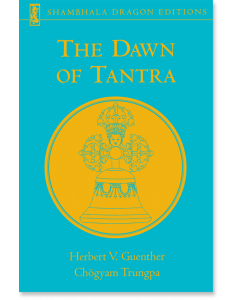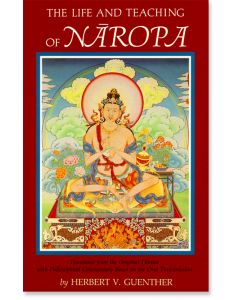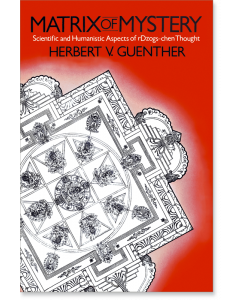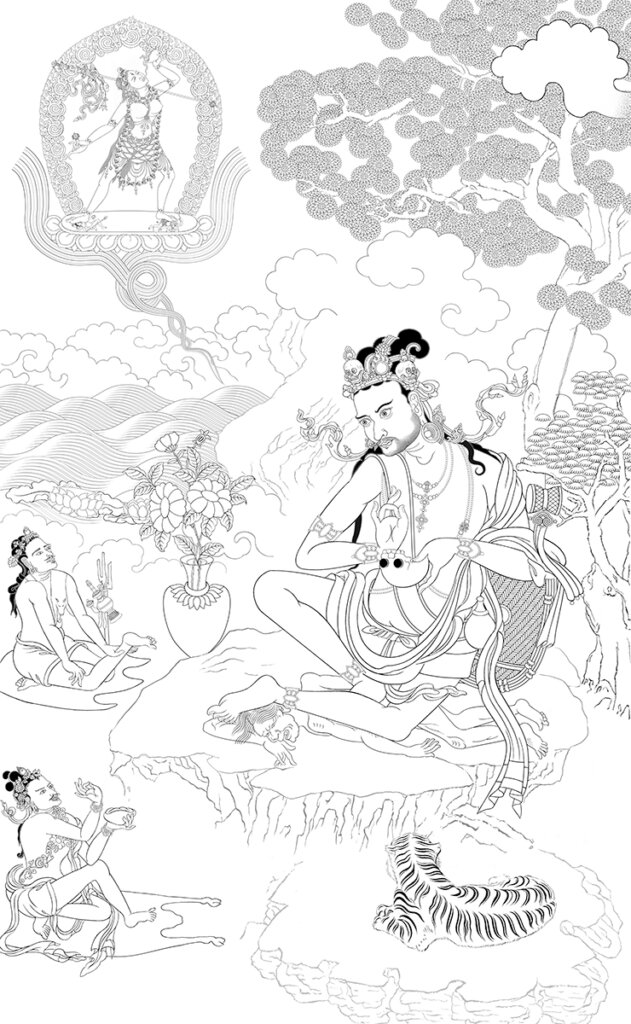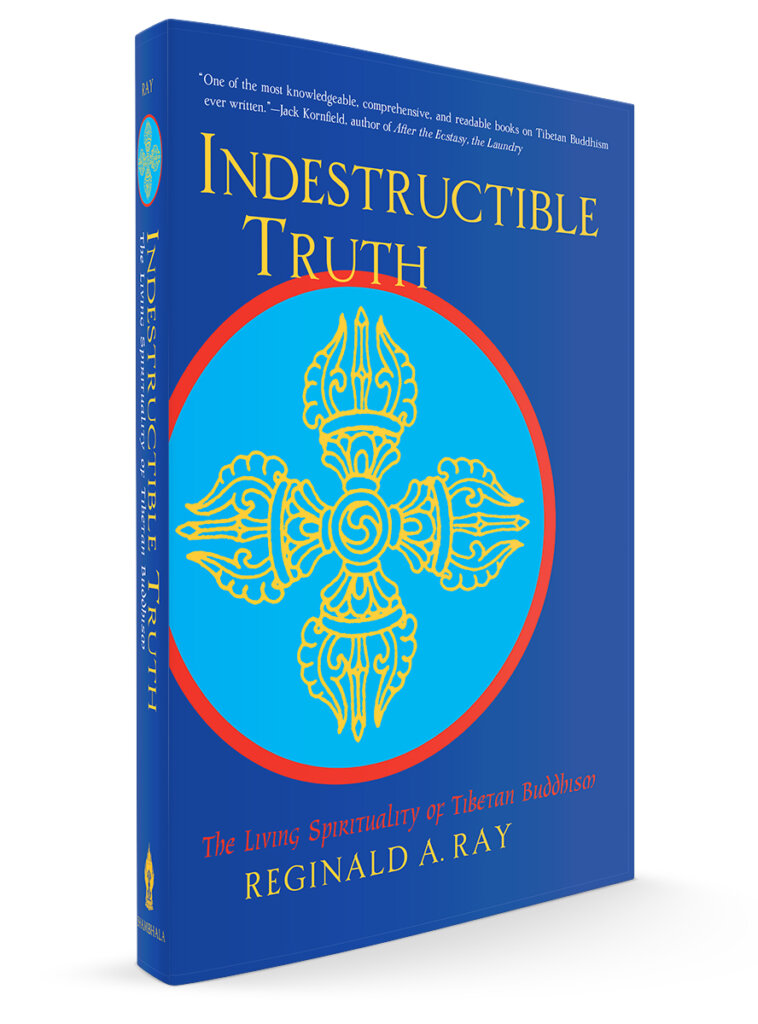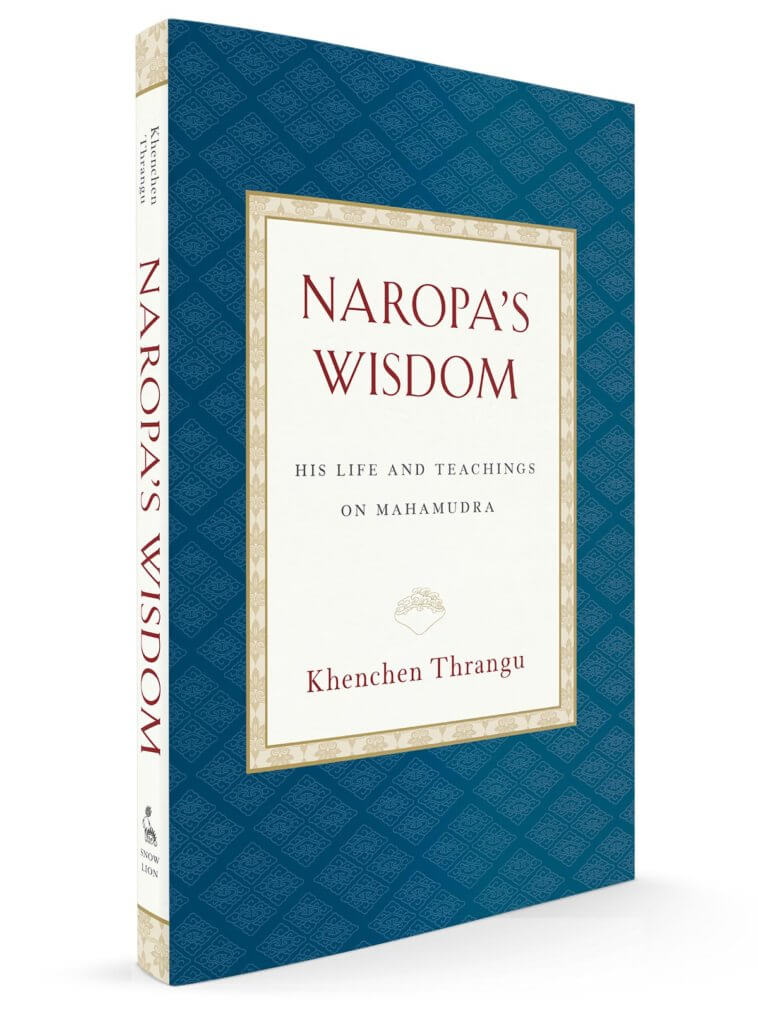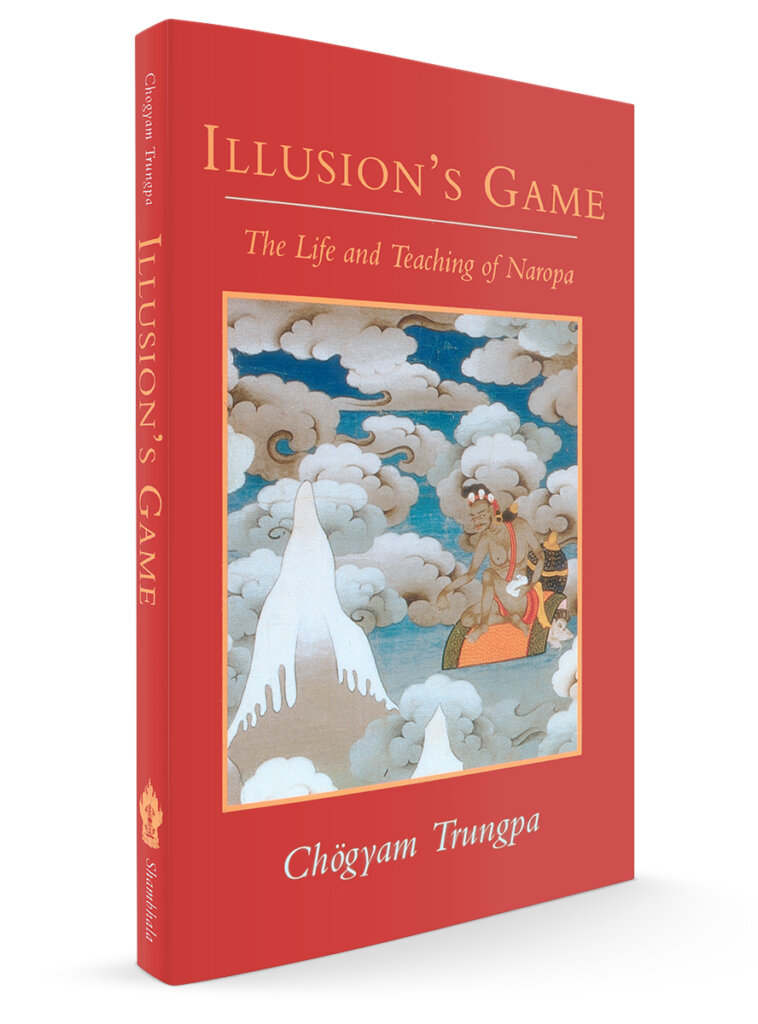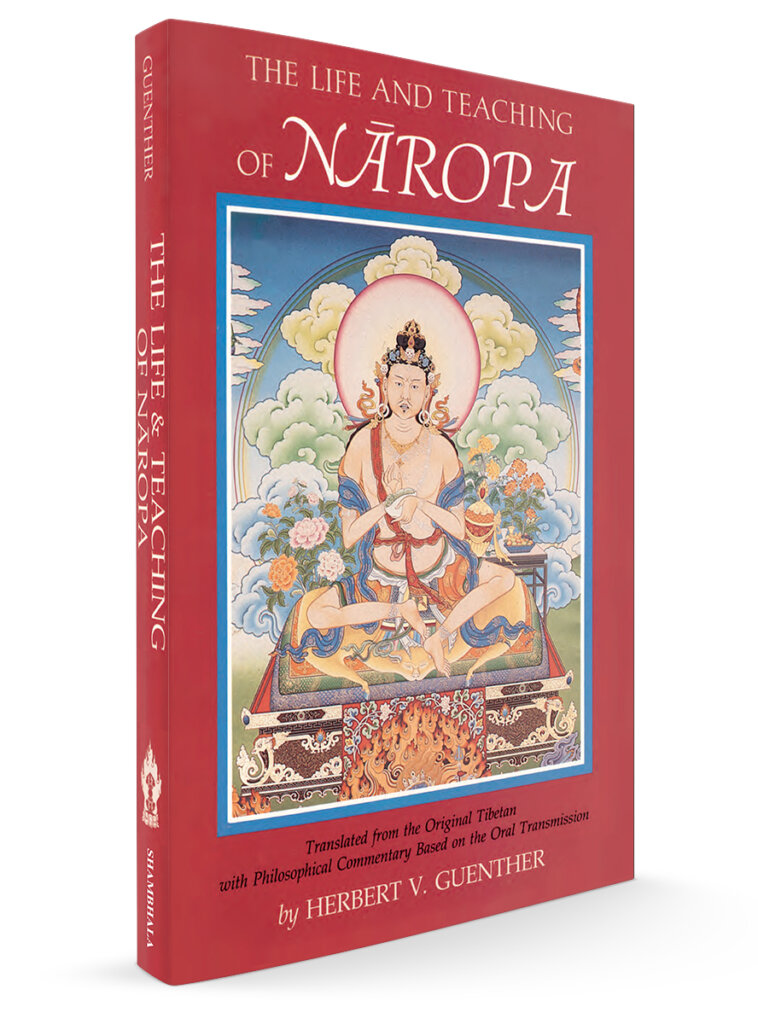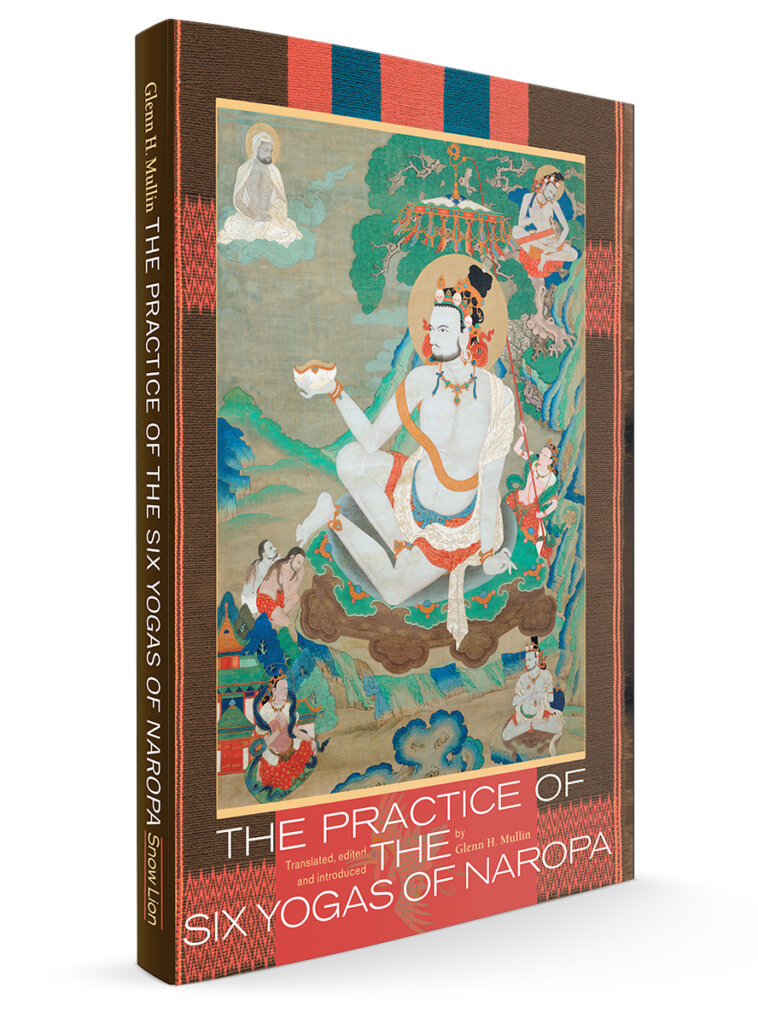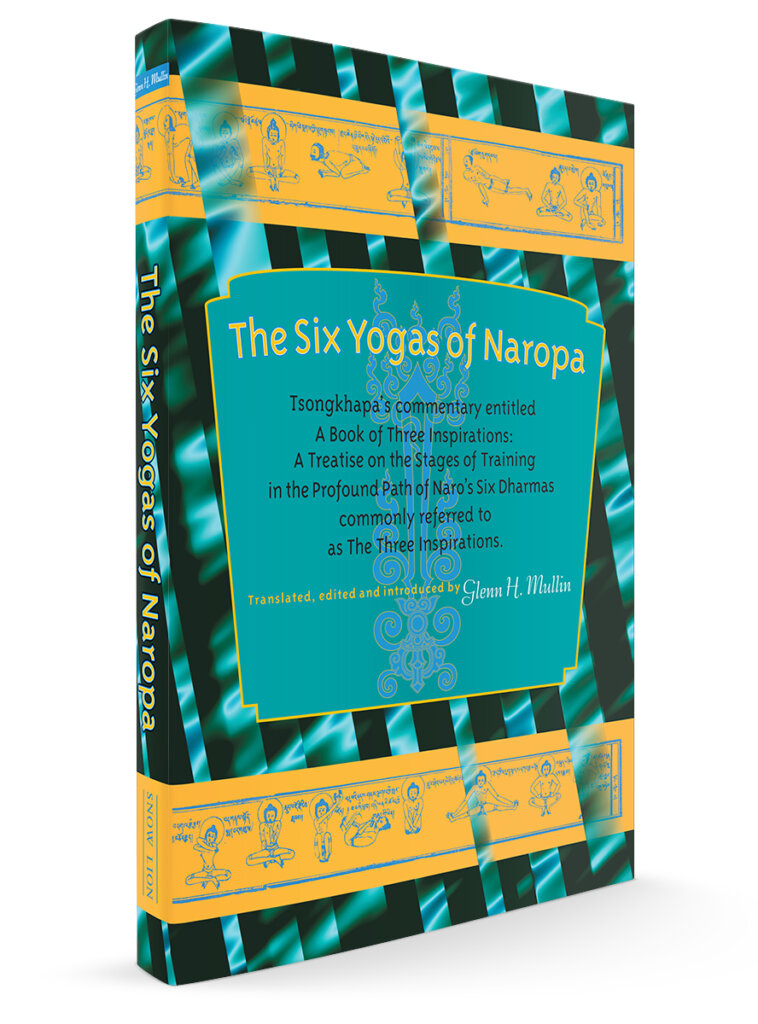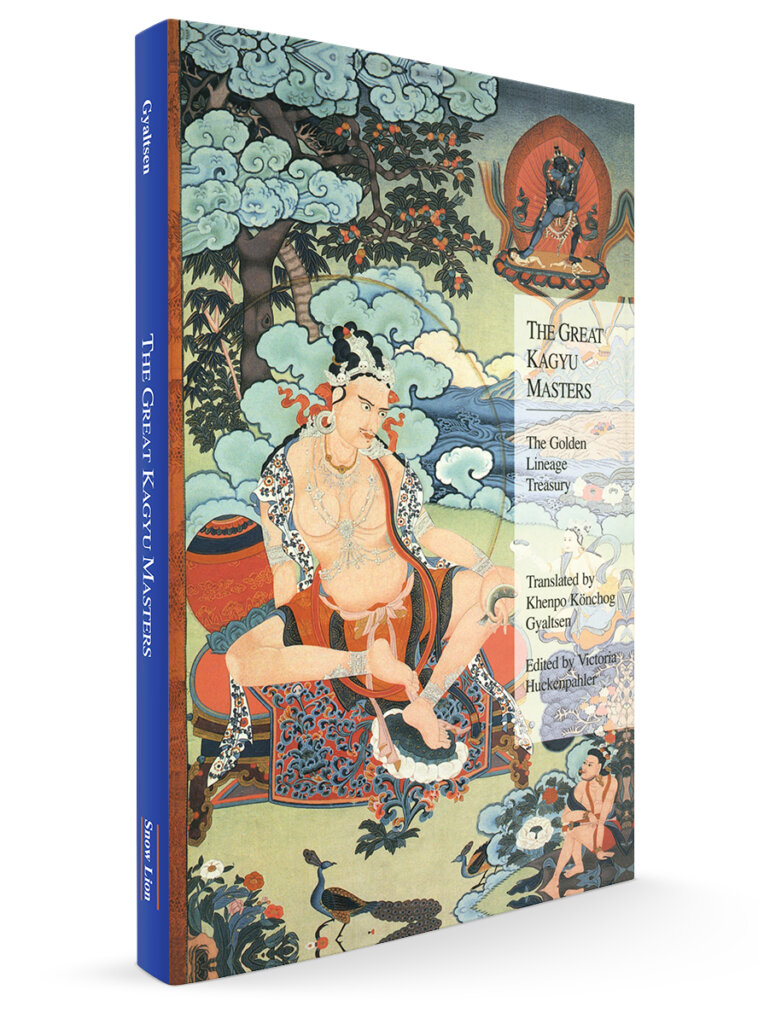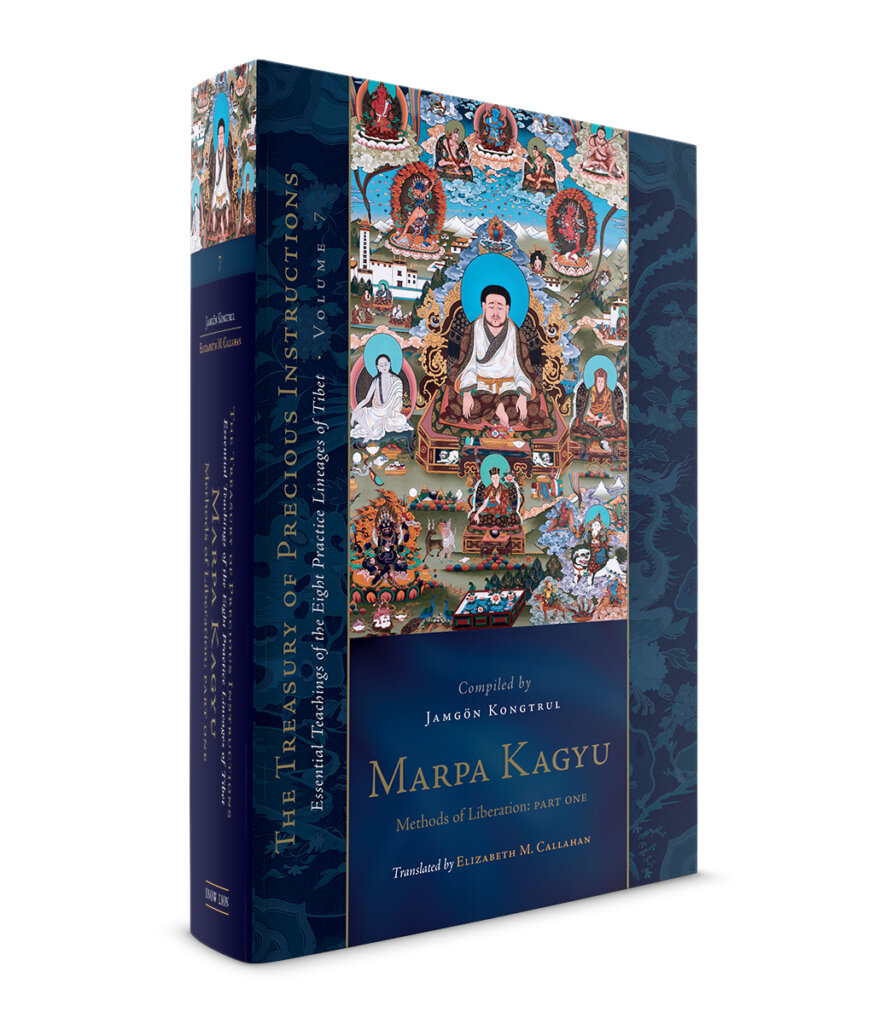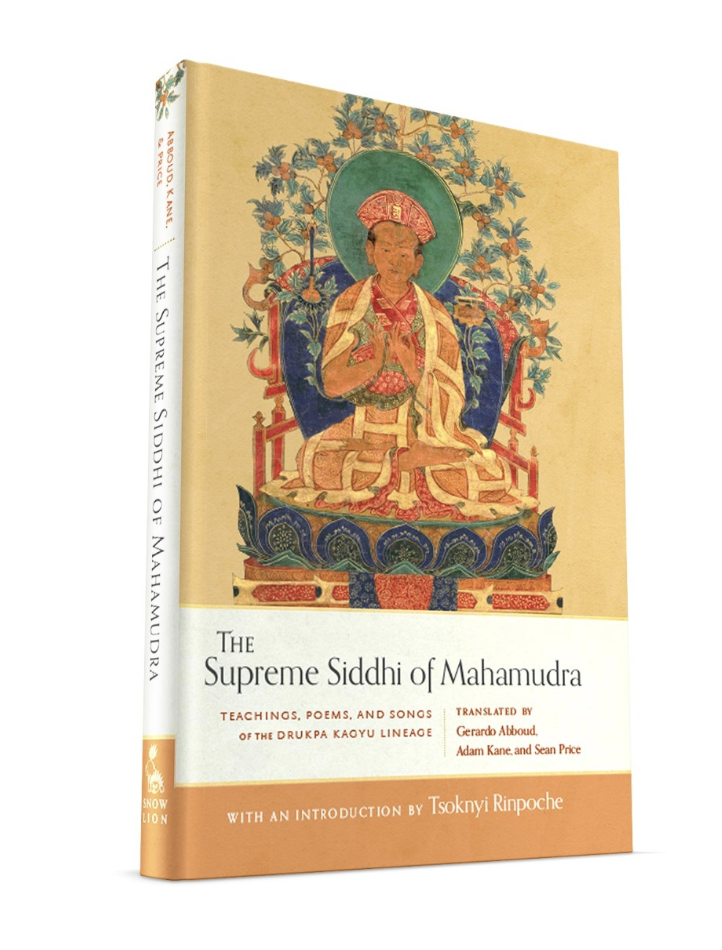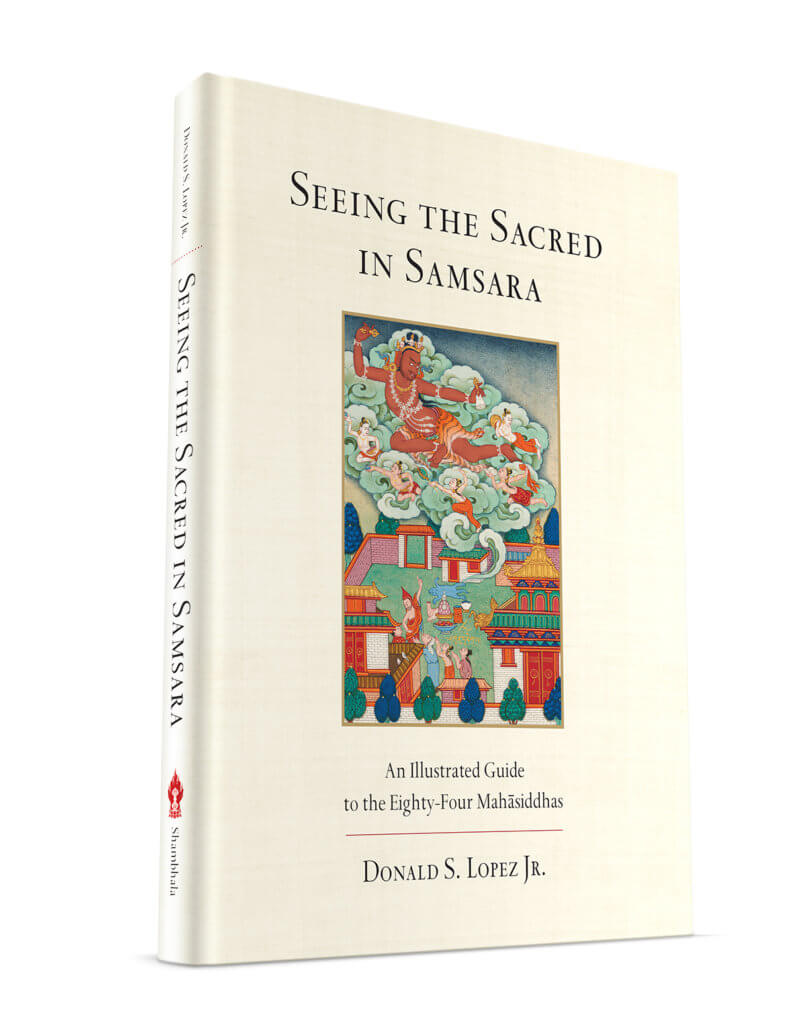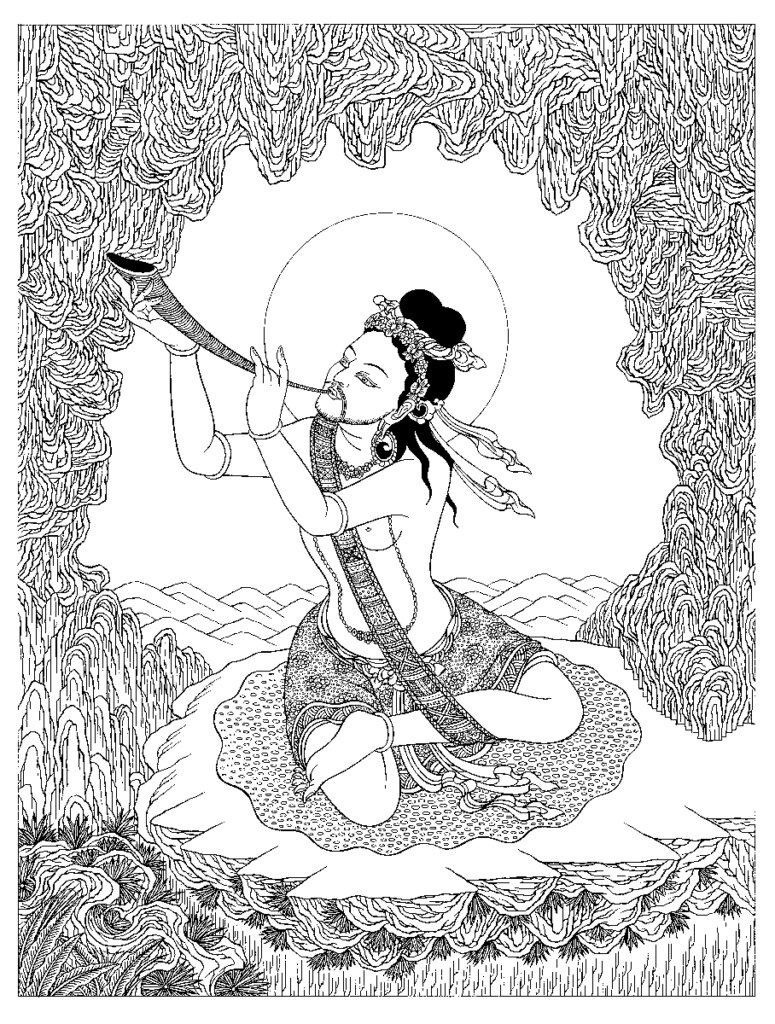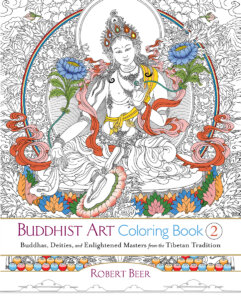

Herbert V. Guenther
Herbert V. Guenther is Professor Emeritus of Far Eastern Studies at the University of Saskatchewan. Among his many published works are his translation of The Life and Teaching of Naropa and The Dawn of Tantra.
Herbert V. Guenther
GUIDES
Naropa: A Reader's Guide to the Great Master of Mahamudra

The following short biography of Naropa is adapted from Indestructible Truth: The Living Spirituality of Tibetan Buddhism:
Naropa, Tilopa’s primary disciple, is born in wealthy circumstances, the favored son of a kshatriya (ruling caste in India) family. At seventeen, he is compelled by his parents to marry. After eight years of marriage, however, he announces his intention to renounce the world. He and his wife agree to a divorce, and Naropa, like Tilopa, takes ordination into the monastic way. Unlike Tilopa, however, Naropa invests many years in intensive study, mastering the major branches and varieties of Buddhist texts, including the Vinaya, Sutras, and Abhidharma of the Hinayana, the Prajnaparamita of the Mahayana, and the tantras. Eventually, he rises to the top of his religious profession, becoming first a high-ranking scholar at Nalanda and then its supreme abbot. His fame as a scholar spreads everywhere, and he is considered unexcelled in his understanding of Buddhist doctrine.
At Nalanda, he has an extraordinary experience with a seeming ordinary old woman but one who it turns out has a profound effect on his life and sends him to find Tilopa.
At this moment, Tilopa appears, a blue-black man dressed in cotton trousers, with a topknot and bulging bloodshot eyes. He declares that ever since Naropa formed the intention to seek him, Tilopa has not been separate from him and that it was only Naropa’s defilements that blinded him to this fact. He tells Naropa that he is a worthy vessel, will indeed be able to receive the deepest teachings, and that he will accept him as a disciple.
For the next twelve years, Naropa is Tilopa’s disciple, undergoing a most demanding tutelage. He suffers immensely through all kinds of physical, psychological, and spiritual trials, torments, and tribulations. The rigor of his training is in direct measure, he understands, to the karmic accretions and obscurations that he has accumulated in his previous lives. Each of Tilopa’s teachings is a catastrophe for Naropa’s sense of personal identity, and in each instance he believes himself to have been irreparably and mortally harmed. In each case Tilopa reveals a deeper level of Naropa’s being, one that is open, clear, and resplendent, independent of the life and death of ego. Throughout this period, Tilopa says very little, and Naropa’s instruction occurs in nonverbal ways, through his own pain and through symbolic gestures that he must assimilate. No security and certainly no confirmation are ever given, and Naropa is able to persevere out of complete devotion to Tilopa and his conviction that he has no other options.
After twelve years of training, one day Naropa is standing with Tilopa on a barren plain. Tilopa remarks that the time has now come for him to offer Naropa the much-sought-after oral instructions, the transmission of dharma. When Tilopa demands an offering, Naropa, who has nothing, offers his own fingers and blood. As Lama Taranatha recounts the event.
Then Tilopa, having collected the fingers of Naropa, hit him in the face with a dirty sandal and Naropa instantly lost consciousness. When he regained consciousness, he directly perceived the ultimate truth, the suchness of all reality, and his fingers were restored. He was now granted the complete primary and subsidiary oral instructions. Thereupon, Naropa became a lord of yogins.
From Tilopa, Naropa receives the transmissions of mahamudra, the six inner yogas, and the anuttara-yoga tantras, and himself becomes a realized siddha in the tradition of his master. Naropa is subsequently seen sometimes roaming through the jungles, sometimes defeating heretics, sometimes in male-female aspect (that is, in union with his consort, a mark of his realization), hunting deer with a pack of hounds, at other times performing magical feats, at still other times acting like a small child, playing, laughing, and weeping. As a realized master, he accepts disciples, and through all of his activities, however benign or unconventional and shocking they may be, he reveals the awakened state beyond thought, imbued with wisdom, compassion, and power. He is also a prolific author whose previous scholarly training enables him to be an eloquent writer on Vajrayana topics, evidenced by his works surviving in the Tenjur.
Naropa is a pivotal figure in the evolution of the Kagyu¨ lineage for the way in which he joins tantric practice and more traditional scholarship, unreasoning devotion and the rationality of intellect. Through him, Tilopa’s profound and untamed lineage is brought out of the jungles of east India and given a form which the Tibetan householder Marpa can receive.
Essential Texts by and about Naropa
Paperback | Ebook
$19.95 - Paperback
Naropa's Wisdom: His Life and Teachings on Mahamudra
As the disciple of Tilopa and the guru of Marpa the Translator, Naropa is one of the accomplished lineage holders of the Kagyu tradition of Tibetan Buddhism. He expressed his realization in the form of spiritual songs, pithy yet beautiful poems that he sung spontaneously. In this book, Khenchen Thrangu, a contemporary Karma Kagyu master, first tells the story of Naropa’s life and explains the lessons we can learn from it and then provides verse-by-verse commentary on two of his songs. Both songs contain precious instructions on Mahamudra, the direct experience of the nature of one's mind, which in this tradition is the primary means to realize ultimate reality and thus attain buddhahood.
Thrangu Rinpoche’s teaching on the first song, The View, Concisely Put, explains the view of Mahamudra in a manner suitable for Western students who are new to the subject. The second song, The Summary of Mahamudra, contains all the key points of the view, meditation, conduct, and fruition of Mahamudra. Thrangu Rinpoche speaks plainly, directly, and without using any technical jargon to Westerners eager to learn the fundamentals of the Mahamudra path to enlightenment from a recognized master. As Thrangu Rinpoche says, “Mahamudra is a practice that can be done by anyone. It is an approach that engulfs any practitioner with tremendous blessings that make it very effective and easy to implement. This is especially true in our present time and especially true for Westerners because in the West there are very few obstacles in the practice of Mahamudra.”
Paperback | Ebook
$19.95 - Paperback
Illusion's Game: The Life and Teaching of Naropa
In what he calls a "200 percent potent" teaching, Chögyam Trungpa reveals how the spiritual path is a raw and rugged "unlearning" process that draws us away from the comfort of conventional expectations and conceptual attitudes toward a naked encounter with reality. The tantric paradigm for this process is the story of the Indian master Naropa (1016–1100), who is among the enlightened teachers of the Kagyu lineage of the Tibetan Buddhism. Naropa was the leading scholar at Nalanda, the Buddhist monastic university, when he embarked upon the lonely and arduous path to enlightenment. After a series of daunting trials, he was prepared to receive the direct transmission of the awakened state of mind from his guru, Tilopa. Teachings that he received, including those known as the six doctrines of Naropa, have been passed down in the lineages of Tibetan Buddhism for a millennium.
Trungpa Rinpoche's commentary shows the relevance of Naropa's extraordinary journey for today's practitioners who seek to follow the spiritual path. Naropa's story makes it possible to delineate in very concrete terms the various levels of spiritual development that lead to the student's readiness to meet the teacher's mind. Trungpa thus opens to Western students of Buddhism the path of devotion and surrender to the guru as the embodiment and representative of reality.
Paperback | Ebook
$34.95 - Paperback
The Life and Teaching of Naropa
Translated by Herbert V. Guenther
In the history of Tibetan Buddhism, the eleventh-century Indian mystic Nâropa occupies an unusual position, for his life and teachings mark both the end of a long tradition and the beginning of a new and rich era in Buddhist thought. Nâropa's biography, translated by the world-renowned Buddhist scholar Herbert V. Guenther from hitherto unknown sources, describes with great psychological insight the spiritual development of this scholar-saint. It is unique in that it also contains a detailed analysis of his teaching that has been authoritative for the whole of Tantric Buddhism.
This modern translation is accompanied by a commentary that relates Buddhist concepts to Western analytic philosophy, psychiatry, and depth psychology, thereby illuminating the significance of Tantra and Tantrism for our own time. Yet above all, it is the story of an individual whose years of endless toil and perseverance on the Buddhist path will serve as an inspiration to anyone who aspires to spiritual practice.
The Six Yogas of Naropa
The Six Yogas of Naropa
The Six Yogas of Naropa are a set of advanced tantric practices that can only be undertaken under the close guidance of a qualified teacher. We do not recommend these books unless one is under such guidance as misunderstanding is very likely.
Paperback | Ebook
$27.95 - Paperback
The Practice of the Six Yogas of Naropa
Edited by Glenn Mullin
This book on the Six Yogas contains important texts on this esoteric doctrine, including original Indian works by Tilopa and Naropa and writings by great Tibetan lamas. It contains an important practice manual on the Six Yogas as well as other works that discuss the practices, their context, and the historical continuity of this most important tradition.
- The Oral Instruction of the Six Yogas by Tilopa
- Vajra Verses of the Whispered Tradition by Naropa
- Notes on "A Book of Three Inspirations" by Je Sherab Gyatso
- Handprints of the Profound Path of the Six Yogas of Naropa by Gyalwa Wensapa
- A Practice Manual on the Six Yogas of Naropa by Tsongkhapa
- The Golden Key: A Profound Guide to the Six Yogas of Naropa by the First Panchen Lama
Paperback | Ebook
$39.95 - Paperback
The Six Yogas of Naropa: Tsongkhapa's Commentary
By Tsongkhapa, translated and introduced by Glenn Mullin
Tsongkhapa's commentary entitled A Book of Three Inspirations: A Treatise on the Stages of Training in the Profound Path of Naro's Six Dharmas is commonly referred to as The Three Inspirations. Anyone who has read more than a few books on Tibetan Buddhism will have encountered references to the Six Yogas of Naropa, a preeminent yogic technology system. The six practices—inner heat, illusory body, clear light, consciousness transference, forceful projection, and bardo yoga—gradually came to pervade thousands of monasteries, nunneries, and hermitages throughout Central Asia over the past five and a half centuries.
More Books Featuring Naropa
Paperback | Ebook
$27.95 - Paperback
The Great Kagyu Masters: The Golden Lineage Treasury
Compiled by Dorje Dze Öd, translated by Khenchen Konchog Gyaltshen Rinpoche
The Golden Lineage Treasury was compiled by Dorje Dze Öd a great master of the Drikung lineage active in the Mount Kailasjh region of Western Tibet. This text of the Kagyu tradition profiles and the forefathers of the tradition including Vajradhara, the Buddha, Tilopa, Naropa, the Four Great Dharma Kings of Tibet, Marpa, Milarepa, Atisha, Gampopa, Phagmodrupa, Jigten Sumgon, and more.
The chapter on Naropa is 45 pages long.
Hardcover | Ebook
$49.95 - Hardcover
Marpa Kagyu, Part One - Methods of Liberation: Essential Teachings of the Eight Practice Lineages of Tibet, Volume 7
The Treasury of Precious Instructions
By Jamgon Kongtrul Lodro Thaye
The seventh volume of the series, Marpa Kagyu, is the first of four volumes that present a selection of core instructions from the Marpa Kagyu lineage of Tibetan Buddhism. This lineage is named for the eleventh-century Tibetan Marpa Chokyi Lodrö of Lhodrak who traveled to India to study the sutras and tantras with many scholar-siddhas, the foremost being Naropa and Maitripa. The first part of this volume contains source texts on mahamudra and the six dharmas by such famous masters as Saraha and Tilopa. The second part begins with a collection of sadhanas and abhisekas related to the Root Cakrasamvara Aural Transmissions, which are the means for maturing, or empowering, students. It is followed by the liberating instructions, first from the Rechung Aural Transmission. This section on instructions continues in the following three Marpa Kagyu volumes. Also included are lineage charts and detailed notes by translator Elizabeth M. Callahan.
The piece by Naropa in this volume include:
- Summary Verses on Mahāmudrā
- Authoritative Texts in Verse: Mahāsiddha Nāropa’s Cycle on the Six
Dharmas - Vajra Song Summarizing the Six Dharmas: The Scholar-Mahāsiddha
Nāropa’s Instructions to the Lord of Yogins Marpa
Hardcover | Ebook
$24.95 - Hardcover
The Supreme Siddhi of Mahamudra: Teachings, Poems, and Songs of the Drukpa Kagyu Lineage
Translated by Gerardo Abboud, Sean Price, and Adam Kane
The Drukpa Kagyu lineage is renowned among the traditions of Vajrayana Buddhism for producing some of the greatest yogis from across the Himalayas. After spending many years in mountain retreats, these meditation masters displayed miraculous signs of spiritual accomplishment that have inspired generations of Buddhist practitioners. The teachings found here are sources of inspiration for any student wishing to genuinely connect with this tradition.
These translations include Mahamudra advice and songs of realization from major Tibetan Buddhist figures such as Gampopa, Tsangpa Gyare, Drukpa Kunleg, and Pema Karpo, as well as modern Drukpa masters such as Togden Shakya Shri and Adeu Rinpoche. This collection of direct pith instructions and meditation advice also includes an overview of the tradition by Tsoknyi Rinpoche.
The second chapter, on Naropa, is a translation of the Condensed Veses of Mahamudra, known in Sanskrit Mahāmudrāsaṃjñāsaṃhitā as and in Tibetan as (Chakgya Chenpo Tsig Dupa (Phyag rgya chen po’i tshig bsdus pa).
Combined with guidance from a qualified teacher, these teachings offer techniques for resting in the naturally pure and luminous state of our minds. As these masters make clear, through stabilizing the meditative experiences of bliss, clarity, and nonthought, we will be liberated from suffering in this very life and will therefore be able to benefit countless beings.
Translator on Gerardo Abboud on The Supreme Siddhi of Mahamudra
Hardcover | Ebook
$29.95 - Hardcover
Seeing the Sacred in Samsara: An Illustrated Guide to the Eighty-Four Mahāsiddhas
By Donald S. Lopez Jr.
This exquisite full-color presentation of the lives of the eighty-four mahāsiddhas, or “great accomplished ones,” offers a fresh glimpse into the world of the famous tantric yogis of medieval India. The stories of these tantric saints have captured the imagination of Buddhists across Asia for nearly a millennium. Unlike monks and nuns who renounce the world, these saints sought the sacred in the midst of samsara. Some were simple peasants who meditated while doing manual labor. Others were kings and queens who traded the comfort and riches of the palace for the danger and transgression of the charnel ground. Still others were sinners—pimps, drunkards, gamblers, and hunters—who transformed their sins into sanctity.
This book includes striking depictions of each of the mahāsiddhas by a master Tibetan painter, whose work has been preserved in pristine condition. Published here for the first time in its entirety, this collection includes details of the painting elements along with the life stories of the tantric saints, making this one of the most comprehensive works available on the eighty-four mahāsiddhas.
The Naropa image from this book is pictured at the top of this page and explains what is being depicted.
Additional Resources on Tilopa
Lotsawa House hosts at least one work by Naropa as well as several where he features. 


